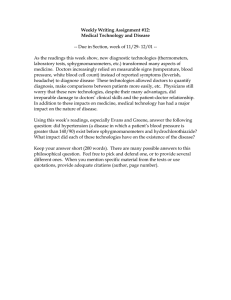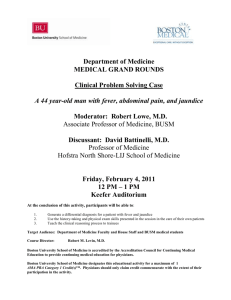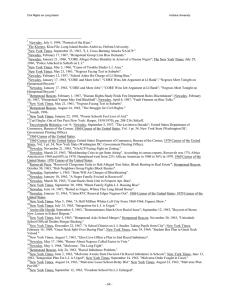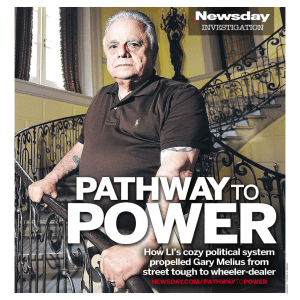Document 14125973
advertisement
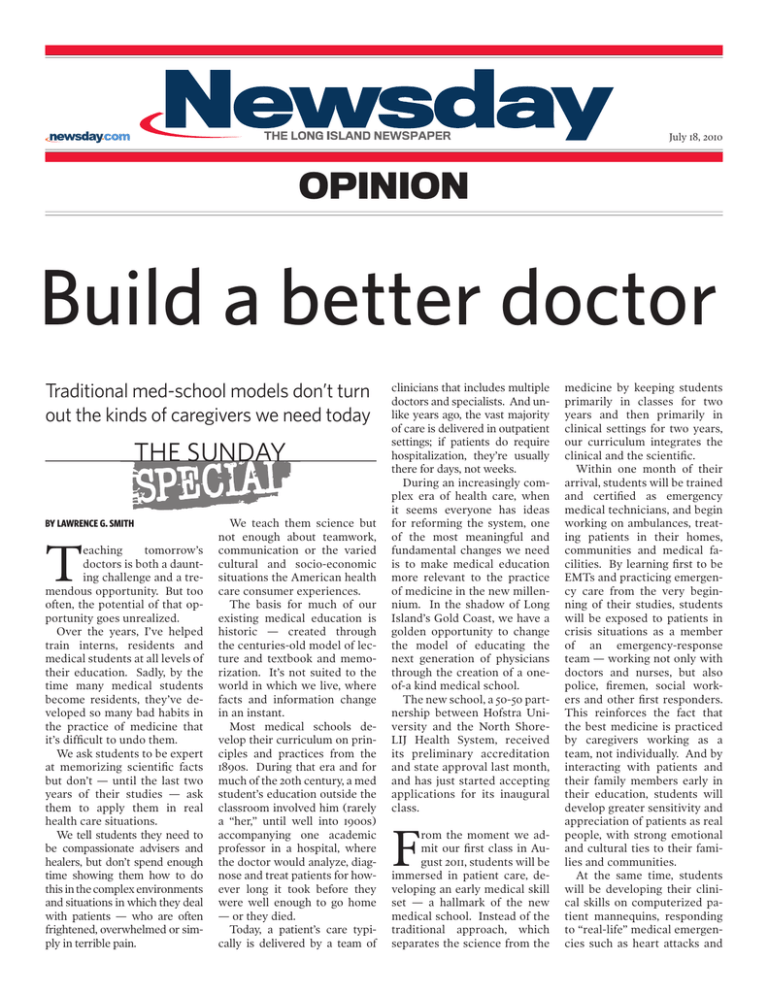
July 18, 2010 opinion Build a better doctor Traditional med-school models don’t turn out the kinds of caregivers we need today the SUNDAY BY LAWRENCE G. SMITH T eaching tomorrow’s doctors is both a daunting challenge and a tremendous opportunity. But too often, the potential of that opportunity goes unrealized. Over the years, I’ve helped train interns, residents and medical students at all levels of their education. Sadly, by the time many medical students become residents, they’ve developed so many bad habits in the practice of medicine that it’s difficult to undo them. We ask students to be expert at memorizing scientific facts but don’t — until the last two years of their studies — ask them to apply them in real health care situations. We tell students they need to be compassionate advisers and healers, but don’t spend enough time showing them how to do this in the complex environments and situations in which they deal with patients — who are often frightened, overwhelmed or simply in terrible pain. We teach them science but not enough about teamwork, communication or the varied cultural and socio-economic situations the American health care consumer experiences. The basis for much of our existing medical education is historic — created through the centuries-old model of lecture and textbook and memorization. It’s not suited to the world in which we live, where facts and information change in an instant. Most medical schools develop their curriculum on principles and practices from the 1890s. During that era and for much of the 20th century, a med student’s education outside the classroom involved him (rarely a “her,” until well into 1900s) accompanying one academic professor in a hospital, where the doctor would analyze, diagnose and treat patients for however long it took before they were well enough to go home — or they died. Today, a patient’s care typically is delivered by a team of clinicians that includes multiple doctors and specialists. And unlike years ago, the vast majority of care is delivered in outpatient settings; if patients do require hospitalization, they’re usually there for days, not weeks. During an increasingly complex era of health care, when it seems everyone has ideas for reforming the system, one of the most meaningful and fundamental changes we need is to make medical education more relevant to the practice of medicine in the new millennium. In the shadow of Long Island’s Gold Coast, we have a golden opportunity to change the model of educating the next generation of physicians through the creation of a oneof-a kind medical school. The new school, a 50-50 partnership between Hofstra University and the North ShoreLIJ Health System, received its preliminary accreditation and state approval last month, and has just started accepting applications for its inaugural class. F rom the moment we admit our first class in August 2011, students will be immersed in patient care, developing an early medical skill set — a hallmark of the new medical school. Instead of the traditional approach, which separates the science from the medicine by keeping students primarily in classes for two years and then primarily in clinical settings for two years, our curriculum integrates the clinical and the scientific. Within one month of their arrival, students will be trained and certified as emergency medical technicians, and begin working on ambulances, treating patients in their homes, communities and medical facilities. By learning first to be EMTs and practicing emergency care from the very beginning of their studies, students will be exposed to patients in crisis situations as a member of an emergency-response team — working not only with doctors and nurses, but also police, firemen, social workers and other first responders. This reinforces the fact that the best medicine is practiced by caregivers working as a team, not individually. And by interacting with patients and their family members early in their education, students will develop greater sensitivity and appreciation of patients as real people, with strong emotional and cultural ties to their families and communities. At the same time, students will be developing their clinical skills on computerized patient mannequins, responding to “real-life” medical emergencies such as heart attacks and strokes. Simulation provides safe preparation for intense, real patient experiences. Still, we cannot lose focus on the innovation that has created great strides in medicine and in science over the past century. As part of the integration of a curriculum that emphasizes humanistic medicine with rigorous science, students will engage in medical research in dozens of clinical areas at The Feinstein Institute for Medical Research. I n this new model of physician training, science, humanism, communication skills, clinical decision-making and respect for patients will be integrated throughout the four-year curriculum, to produce scientifically sophisticated, humane, team-oriented caregivers. With that kind of training and real-life experience, graduates will become leaders among their peers and sought after by patients. These will be physicians who understand the dual moral responsibility of giving exemplary care to individual patients, and fulfilling their responsibility to caring for the entire community, including the medically underserved. By design, the new medical school will not only respond to the American Association of Medical Colleges’ goal to in- crease the size of the graduating medical school class by 30 percent by 2015, but also to help mold students into caring, patient-centered physicians with a knowledge base grounded in sophisticated science. Considering the prevalence of preventable, chronic diseases in our society, we need doctors who go beyond treating people when they’re sick. Physicians need to take more active roles in their patients’ lives, promoting lifestyle changes and an integrated approach to health and wellness that will reverse the disturbing health trends we’re seeing in this country. The best doctors are both authorities and lifelong learners in the science and clinical aspects of medicine, who have entered this profession not because of the promise of a lucrative career, but because of their desire to make a meaningful difference in the lives of others. The late UCLA basketball coach John Wooden, a teacher himself, once said, “It’s what you learn after you know it all that really matters.” Future doctors should be taught to remember that. Dr. Lawrence Smith is dean of the Hofstra/North Shore-LIJ School of Medicine and Chief Medical Officer of the North Shore-LIJ Health System. (#79062) Copyright 2010 Newsday LLC. Reprinted with permission. To subscribe to Newsday, please call 1-800-Newsday or visit us online at Newsday.com. For information about reprints and permissions from Newsday, visit PARS International Corp. at www.newsdayreprints.com. This PDF is authorized for electronic distribution and limited print distribution through November 1, 2014.

